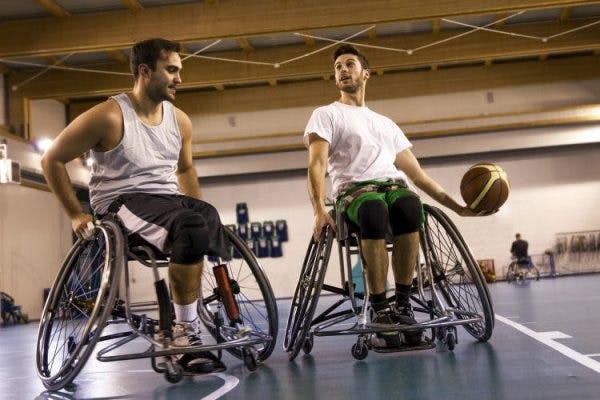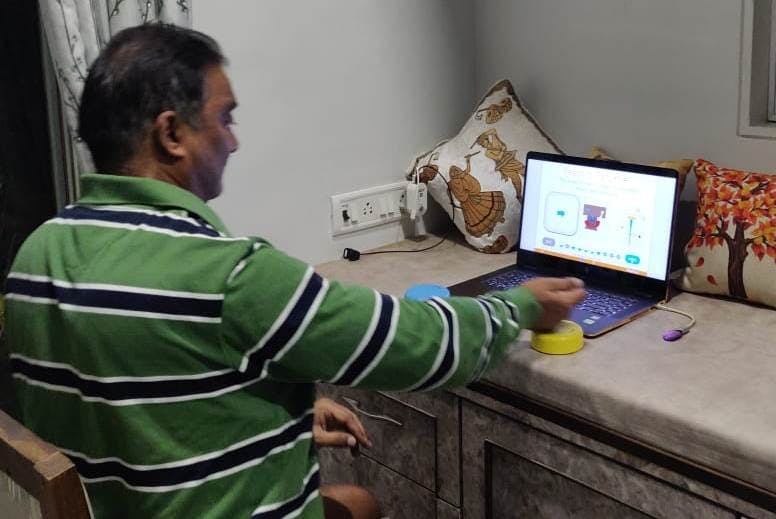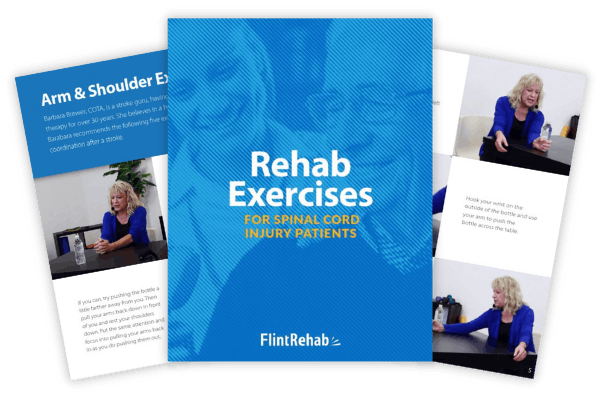After spinal cord injury, survivors may struggle with hand movement, coordination, or other effects. Fortunately there are hand exercises for spinal cord injury that help improve hand function and promote recovery.
This article will explore some of the most popular and effective hand exercises for spinal cord injury that help rebuild strength and flexibility. Be sure to check with your therapist before adding any new exercises to your regimen to make sure they’re safe and appropriate for you.
Benefits of Therapy Exercises After Spinal Cord Injury

Through rehabilitation, many survivors can use therapeutic exercises to stimulate neuroplasticity, the central nervous system’s ability to rewire itself, and improve function.
Neuroplasticity is essential to restore function after neurological injury, and is best activated through high-repetition of exercises, or massed practice. The more a skill is practiced, the more the nervous system will learn to recognize its importance and strengthen that skill.
The more you use it, the more you improve it. In addition, the exercises must be meaningful to you; think about why you’re doing the specific exercise and how that movement relates to an important activity or goal.
By engaging in massed practice with movements that relate to specific functional activities or goals, individuals with incomplete spinal cord injuries (partial damage) can maximize neuroplasticity to improve mobility, coordination, and overall hand function.
However, even survivors with complete spinal cord injuries (meaning the spinal cord is completely severed) with severe hand weakness can benefit from passive exercises.
How to Adapt Hand Exercises for Individuals with Quadriplegia

Passive exercise involves assisting your affected limb through a movement. Even though passive exercise does not involve direct effort by the muscles in the affected limb, it helps stimulate neuroplasticity.
Depending on the level of the spinal cord injury, and whether it’s complete or incomplete, individuals with quadriplegia can use passive, active-assisted, or even resistance exercise to capitalize on neuroplasticity to regain as much movement as possible.
Even for those with no voluntary control or strength in their hands, passive exercises have been shown to help prevent contractures, maintain joint range of motion, reduce pain, and manage spasticity. In spinal cord injury rehabilitation, passive exercises are often used to improve mobility and range of motion in people with quadriplegia.
Passive range of motion exercises can also help improve blood flow, flexibility, and overall function. You can either practice yourself, or your therapist or caregiver can assist you to facilitate the movements. With consistent practice, this may help reintroduce movement into your hand.
How the Spinal Cord Injury Level Matters
The level of spinal cord injury is an important factor to consider when creating a rehabilitation exercise program because it determines which functions are affected. For example, high level injuries, such as cervical spinal cord injury (which affects the neck area), can result in weakness or paralysis in both the arms and legs (quadriplegia).
Movement is only affected from the level of spinal cord injury down. Meaning, lower level spinal cord injuries may leave arm function unaffected. Thus, individuals looking for hand exercises after spinal cord injury have likely sustained high-level SCIs.
For instance, survivors of a C1-C4 complete spinal cord injury may have no hand function, whereas those with a C8-T1 injury may have full wrist and hand control.
We want to make sure that the exercises match your ability level. If you are unable to perform a particular exercise actively, then try it active-assisted or passively with the help of your family or caregiver. With time and a lot of repetition (remember, massed practice), you can progress towards doing the exercises more independently.
Hand Exercises for Spinal Cord Injury: Getting Started
Engaging in high-repetition exercise is essential to improve fine motor skills. Start with simple hand exercises for spinal cord injury and work your way to more challenging movements, depending on your ability level. Remember, you can turn any of the hand exercises below into passive or active-assisted exercises by asking a caregiver to help move your hand through the movements.
Just make sure that they are physically assisting only as much as you need to complete the movements. The more that you are actively and physically engaged in the exercise, the more it will stimulate nerve regeneration and rewiring.
Be sure to consult with your therapist before attempting new exercises that may not be safe. Your therapist can also provide guidance and a tailored rehabilitation plan suitable for your ability level.
Here are some great beginner hand exercises for spinal cord injury:
1. Palm Up, Palm Down
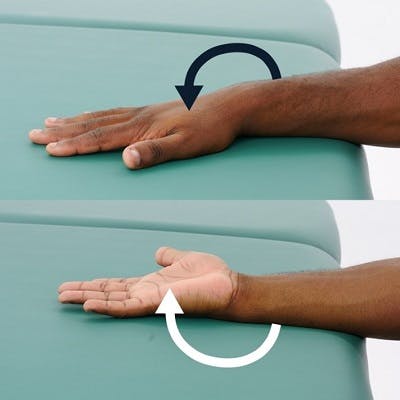
For this exercise, take your hand and place it on the table with your palm facing upwards (ie. supination). Then use your other hand to rotate the palm down (ie. pronation). Repeating this exercise can help improve hand and wrist mobility.
If you are unable to do this on your own, your caregiver can also help flip your palm as you continue to build strength and regain mobility. Isolate the movement using only your wrist and forearm (try not to twist and turn using your shoulder and body to compensate).
This exercise may seem simple, but it helps improve hand and wrist coordination. We use this movement all the time for opening doors, turning keys, and fastening buttons on our clothing when we dress.
2. Wrist Flexion and Extension
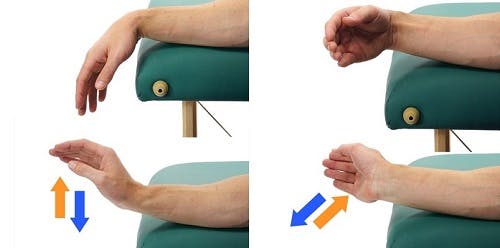
Place your forearm on a table for support with your hand over the edge. Gently bend your wrist fully upward (ie. wrist extension) and downward (ie. wrist flexion). You can make this exercise more challenging by holding a light weight; a water bottle or can of beans works well.
If you’re unable to lift your wrist against gravity yet, then turn your forearm so that you’re flexing and extending your wrist sideways back and forth. This exercise helps improve wrist flexibility, which is necessary to increase hand movement and range of motion.
3. Grip and Release
Objects of varying sizes and shapes require us to use different types of grips with our fingers and hands. While sitting, place a variety of items of different shapes and sizes on the table. This can be anything like a pen, spoon, water bottle, tennis ball, keys, or marbles.
One by one, grab the item and practice gripping on it with your affected hand. Lift or move it across the table and release. After moving each object across, practice bringing them all it back to the other side of the table.
4. Finger Opposition
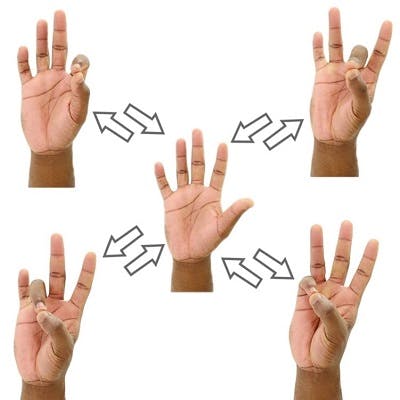
For this exercise you can either use one or both hands at the same time. You are going to practice “making O’s” by alternating tapping the tips of each finger to your thumb. This can be a difficult exercise as it requires some fine motor coordination, so if you can’t touch your fingertips precisely at first, keep trying.
You will improve through consistency and practice. Even just thinking about or visualizing the movement can help stimulate neuroplasticity.
5. Therapy Putty
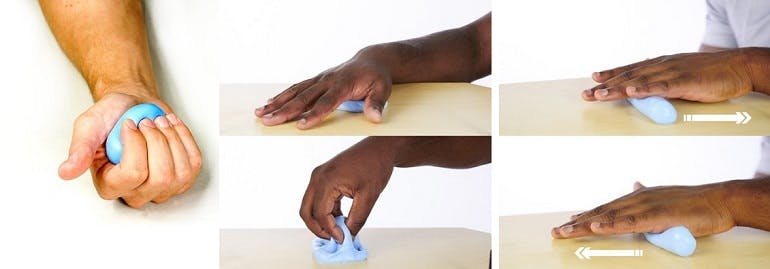
Therapy putty is a simple, affordable physical therapy tool that helps individuals improve hand dexterity. It can also help rebuild hand strength and restore mobility. With therapy putty you can practice exercises such as pinching, gripping, rolling, extension, and even molding it into shapes. The possibilities are endless.
Occupational Therapy Hand Exercises for Spinal Cord Injury
Practicing hand exercises that mimic daily activities such as opening and closing doors, turning the lights on or off, and eating. Here are a few examples of occupational hand exercises you can try:
6. Turning Door Knobs
Opening and closing doors is a necessary part of our daily lives, therefore practicing turning door knobs is a great occupational exercise to practice. Turning the door knob helps you to develop more coordination and strength in your wrist. Even when you are opening a door during your daily routine, pay extra attention to the movement to turn it into therapy.
As best as you can, focus on trying to turn the door knob using just your hand and wrist without twisting at your shoulder or trunk. When attention is paid to a movement, it helps stimulate the nervous system.
7. Flipping Light Switches
Turning the light on and off is another way to practice daily routine activities. Flip the light switch using your affected hand. You can even try alternating each finger. This helps develop fine motor control and build strength in your hand.
8. Holding Utensils
Utensils are often essential for eating, an extremely important daily activity and one of life’s greatest pleasures. You can practice by grabbing a utensil like a spoon to practice grasp and release movements. Utensils that are slightly heavier and have larger or thicker handles are easier to manage.
You can also lift the utensil up and down to add arm movement too. As you practice your hand and arm movements over time, you can improve control and feel more comfortable using a utensil for eating.
9. Container Lid Twists

Place several containers with different sized lids on a table. While seated, remove the lid of each container one-by-one. After you have removed each lid, screw the lid back on each container one-by-one. One hand should be used to stabilize the container, while the other hand is managing the lids.
After completing the set of containers, try switching hands. If this exercise is too challenging, you can have a caregiver loosen the lids partially or help stabilize the containers so you can focus on the lid twisting.
10. Pouring Water Into a Cup

Staying hydrated and drinking water is crucial for spinal cord injury recovery and overall health. While there are various ways to drink water, such as from a bottle or a straw, it helps to practice the skill of holding and using a cup. You can practice this by pouring water into a cup but try not to make it too heavy.
The weight of the water will help add resistance as you practice holding the cup by gripping your fingers. Another good exercise is holding a small cup in each hand and slowly pouring water back and forth. If you’re just starting out, consider using plastic cups for safety.
Intermediate, Fun Hand Exercises for Spinal Cord Injury
More advanced hand exercises can be fun but also more difficult. When choosing hand exercises to add to your regimen, be sure to choose movements that make you feel challenged but not frustrated. If you give these a try, be sure to take breaks in between and not overwork or overwhelm yourself.
Some advanced hand exercises for spinal cord injury can include:
11. Playing Card Games
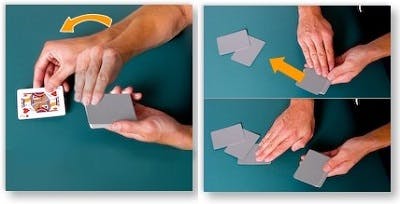
Card games can help individuals with quadriplegia improve fine motor skills while playing a fun game. You can shuffle a card deck, pick a single card out of the pile, and practice holding it or placing it down. You can also practice flipping cards one by one, or practicing dealing by sliding cards off the deck one at a time. There are also card holders that can help make things easier as you work your way up to playing without assistance.
12. Popping Bubble Wrap
The squeezing motion needed to pop the bubbles adds resistance, which helps build strength in your fingers. With this exercise you can practice a tripod grip (using your thumb, index, and middle finger) which is the motion most often used to pick up an item.
13. Painting

Painting is a great hand exercise for spinal cord injury recovery because of the coordination, delicate targeted strokes, and dynamic movements it requires. You can practice hand control with long, fluid strokes and repetitive short strokes. It also gives you creative freedom to use all kinds of shapes and colors, making it a fun and therapeutic hand exercise.
14. Coin Flips

This exercise requires a lot of fine motor coordination using just the fingertips. Place various coins on a table and flip each coin with your hand. You can also practice creating a tall stack of coins without knocking it over, then repeating.
15. Tracing
Take an image of something you like, place a piece of paper over it, and try your best to trace it. Tracing requires meditative focus, which helps improve the mind and body connection. For this exercise, you can practice tracing from the outside in and then trace it again from the inside out.
16. Braiding
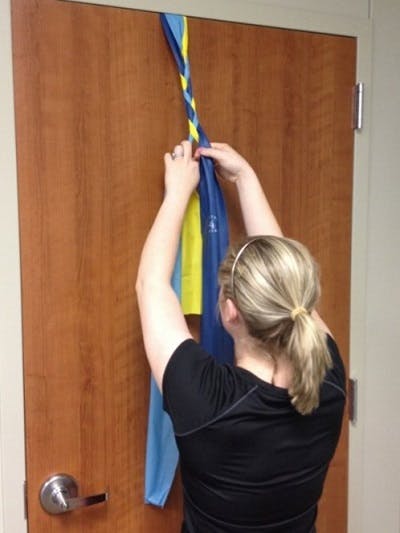
Braiding is an intricate process that requires control over your fingers. The repetitive motions of folding each strand over while holding others in place help build endurance as well as in-hand manipulation skills. You can practice braiding with hair, or three pieces of rope. The thicker the strands that you’re braiding, the easier it will be.
17. Playing Jenga
Jenga is a game that can be played with multiple people to make it more fun. It requires extra attention and focus which helps stimulate neuroplasticity. Pushing the blocks and carefully removing them with your fingers also helps develop stability and fine motor control.
How to Motivate Yourself to Be Consistent with Your Hand Exercise Regimen
Practicing the same exercises over and over again can get redundant and at times, boring. To help you stay engaged and motivated you can use gamified neurorehabilitation devices such as MusicGlove.
This is a fun, interactive hand therapy device that contains lots of hand exercises you can practice from the comfort of your own home. MusicGlove is especially popular because it combines music and hand exercises into a therapeutic game and can be adapted to your ability level. User’s can choose to focus on just one finger at first, and work their way up to targeting all fingers for an intensive workout.
MusicGlove keeps track of your progress and motivates you to achieve the high repetition of exercises necessary to spark neuroplasticity. On average, users are motivated to accomplish hundreds of repetitions per half hour session. This is one reason why MusicGlove has been clinically proven to improve overall hand function in just 2 weeks.
Here’s a story of a spinal cord injury survivor that has been using MusicGlove for just one week:
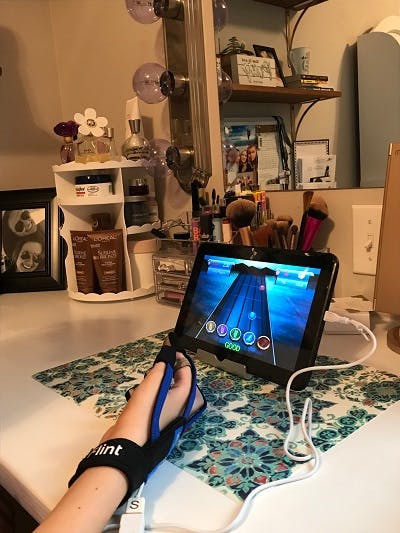
“My 17 year old daughter had a SCI and suffered 2 strokes. She has minimal function on her right hand and no function on her left. She’s been using the Music Glove for a week now and her pinch grip on her right hand has gotten stronger. I’m excited about the possibilities Music Gloves gives her to regain more mobility and usage of that hand. Definitely worth the investment.“
-Chelsea
When time with a therapist is limited or grows too expensive, at-home therapy devices like MusicGlove can help bridge the gap. They inspire motivation to exercise on a consistent basis, which is the key to recovery after spinal cord injury.
Using Hand Exercises for Spinal Cord Injury Recovery
While every spinal cord injury is different, many survivors with high-level SCI often have difficulty with hand dexterity. Thus, hand exercises for spinal cord injury are beneficial to improve hand function and promote/maximize recovery.
Exercise stimulates neuroplasticity which is vital for the central nervous system to repair itself. Neuroplasticity is best activated through massed practice, therefore survivors must engage in high repetition exercises.
Remember to work with your therapist to find the most effective hand exercises for your ability level. Lastly, remember to practice hand therapy exercises you enjoy and are meaningful to you to stay motivated. We hope this article has helped you explore various hand exercises for spinal cord injury and encouraged you to practice as much as possible.









